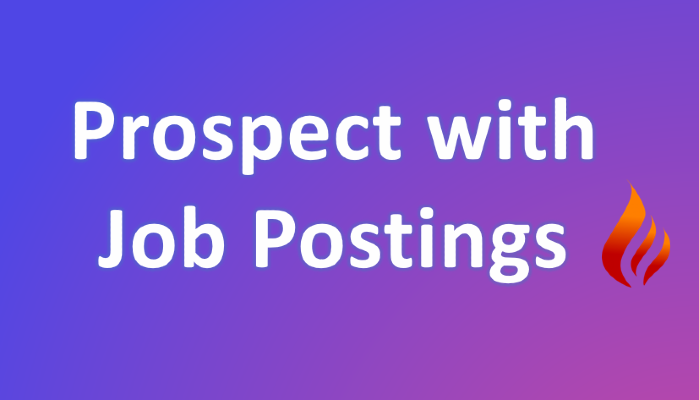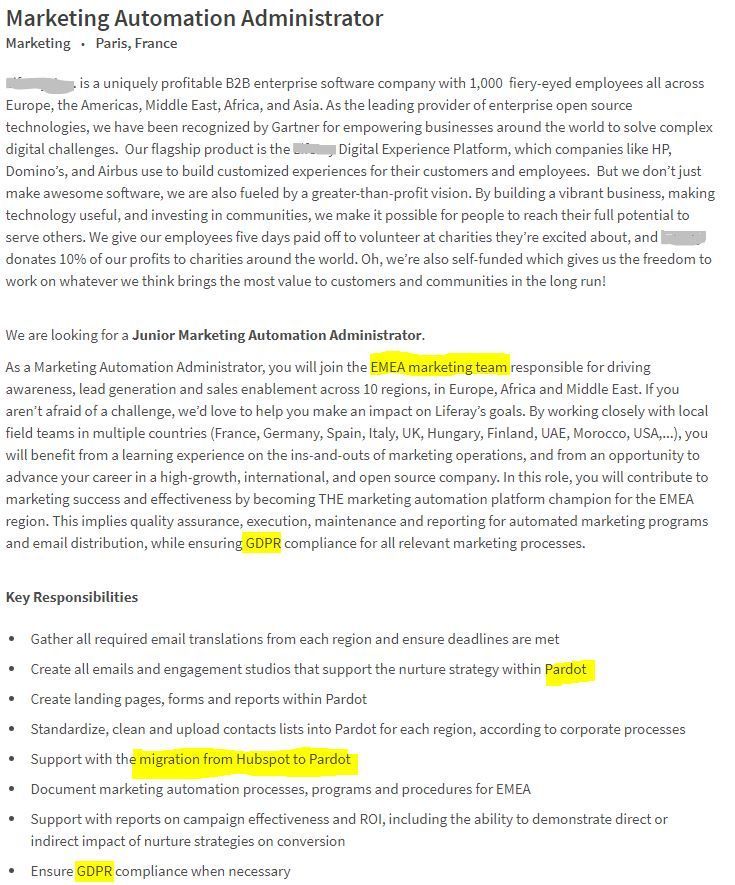Find qualified leads with job postings

More data to sell more?
You have certainly noticed: as time goes by, we are more and more solicited. Our attention is no longer a commodity, but has become a scarce commodity that companies are trying to attract, even if it is only for a few seconds.
This means that when you are trying to sell to a company, traditional approaches don't have the same ROI as before: the cold call or cold email are more likely to end up in the trash than to catch your prospect's attention, assuming your prospecting campaign has indeed reached a prospect that matches your target.
To attract your prospect's attention, it is essential to personalize your sales approach: adapt your targeting and your message according to the company's context and current needs.
You wouldn't want to sell an invoicing management SaaS to a company that has just implemented a full ERP including invoicing...
This is where the data comes in: to draw an accurate picture of the company to prospect, you need the right information. And this data can be obtained thanks to the fact that companies regularly generate a large volume of data: public communication (press, blog, etc.), financial and legal statements, job offers...
These data are "weak signals" of the company, which can be interpreted to discover :
- The current needs of the company: need for a specific tool or skill.
- The company's buying position: strong buying position thanks to recent financing for example.
Our ability to interpret these weak signals will help us find more business opportunities.
Job postings: from weak signals to buying opportunities
In our quest to profile companies, job postings are particularly relevant data. You may have already used it!
As a company evolves, its context and needs change, which is often reflected in job postings.
By browsing a company's job postings, you can discover :
- The company's human resources needs.
- The use of the company's technologies and products.
- Launching a new project or a new subsidiary.
- Etc...
For example, let's say you want to sell a SaaS marketing automation solution to companies that use a competing solution.
You find the following job offer:

As you read this job posting, you can interpret the following information about the company:
- The Paris marketing team is organized around an EMEA marketing team
-> The volume of contacts processed by the platform is likely to be high.
- The company uses Pardot as a Marketing Automation tool:
-> The competing platform you were looking for.
-> The budget was voted for this type of product.
- The company was using Hubspot and chose to migrate to Pardot :
-> High level of maturity on marketing automation tools.
-> They have just changed their marketing automation tool: probably the renewal date of the contract with Pardot is 1 year after the migration, it will be the right time to approach the company.
- The GDPR is mentioned several times
-> This can be an interesting point of approach.
Quite a bit of information with just one job posting!
By automating this analysis on the companies' job offers, it becomes easier to :
- Find new qualified prospects with an HR need, or using a specific product or technology.
- Enrich the context on existing prospects or customers.
- Discover a potential market.
- Prioritize your leads.
Find a company's technology and product stack
Another way to map the use of a company's technologies and products is to take a look at the source code of its website.
You can find instances of a technology or a product API call:

Source code of the company's homepage
However, let's say you sell accounting software and you want to find companies that use competing solutions: the product trail won't necessarily be found in the source code of the home pages: the only place you'll be able to find this information is in the company's job listings.
Another reason to look at job postings is to notify changes: as we saw in the previous job posting, the company notified "publicly" through a job posting that they had just changed their marketing automation tool.
Hiring a new marketing director would also have been a strong buying signal: once a new executive is hired, it is likely that the product line will be challenged or even changed within a month. This is the perfect time to approach the customer!
It is therefore very useful to capture these signals with job postings, which helps you to identify the context and needs of the company.
Good data is essential
The use of data as a sales development lever has become essential: more than ever, you need to contact the right prospect at the right time.
Companies leave clues about their situation and needs in job postings: the challenge for us is to interpret these weak signals and convert them into buying opportunities, in order to target the right company and contextualize our approach.
The job offers dataset is very well adapted to this use, because companies translate their needs and context into recruitment offers.
Do you want to automate this approach?
Find more prospects by using the information contained in the job offers?
This is exactly what we do at Mantiks:)
